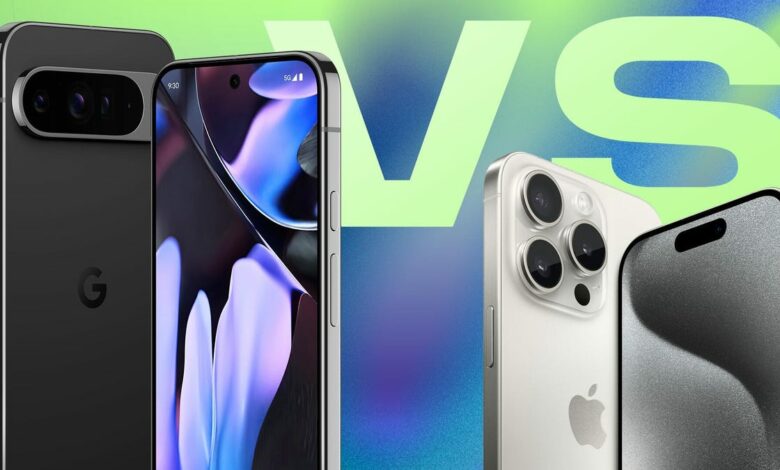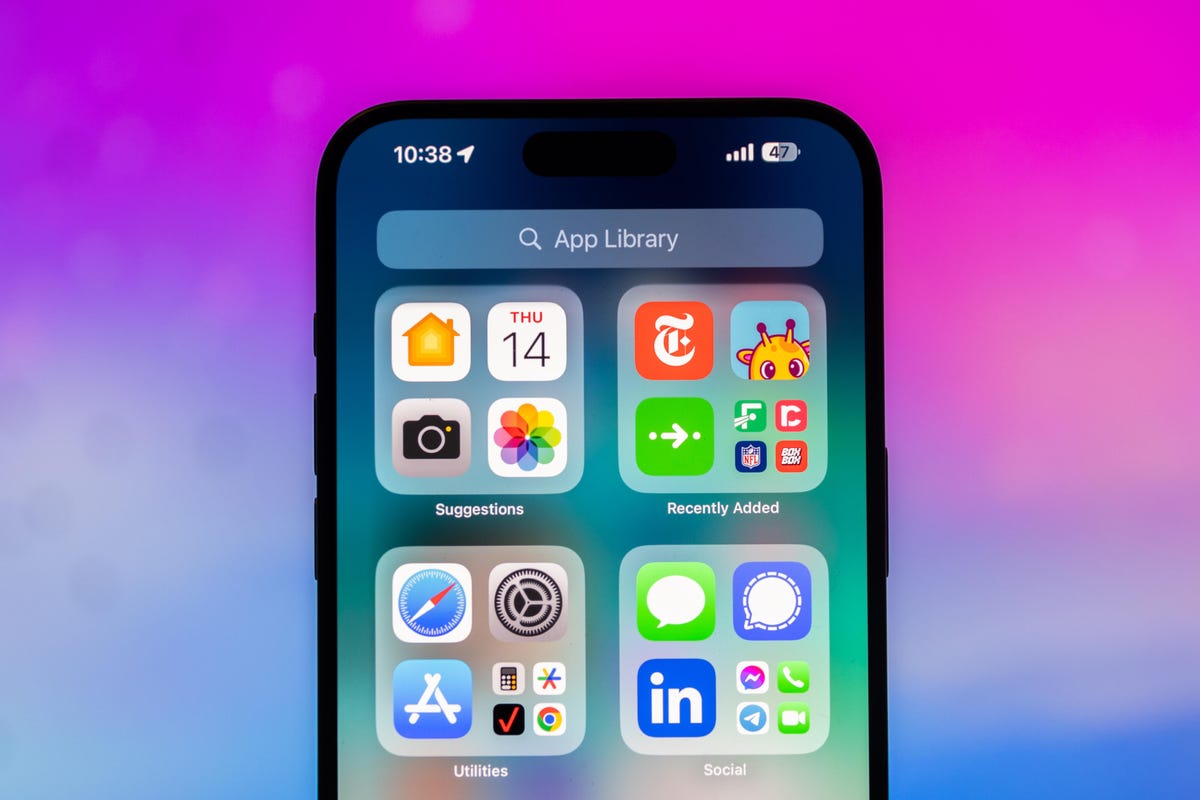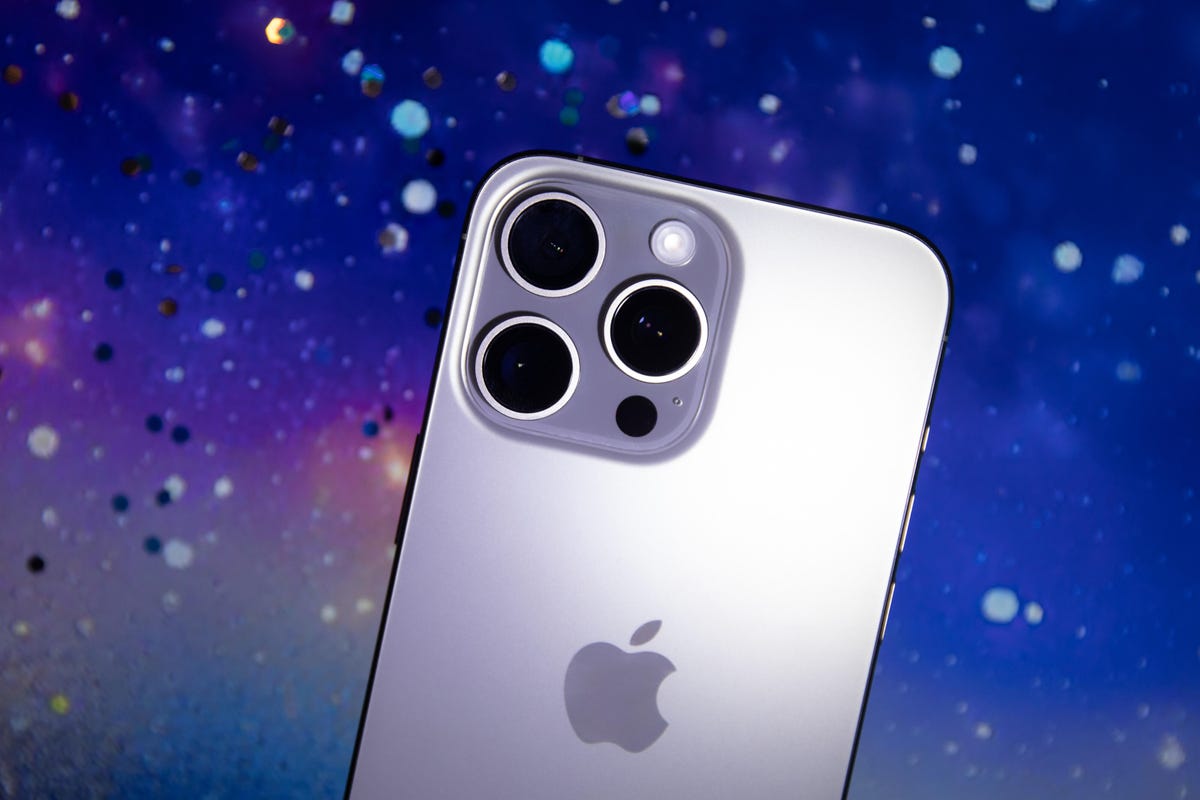Pixel 9 Pro XL vs iPhone 15 Pro Max: Display, cameras and key specs compared



The Pixel 9 Pro XL appears to be Google’s answer to another high-end flagship: the iPhone 15 Pro Max.
Because Apple’s Pro models gained popularity Thanks to their more advanced cameras, increased processing power and, in the case of the Pro Max, a larger display, it appears Google is looking to leverage its power through a larger device as well.
But how do the Pixel 9 Pro XL and iPhone 15 Pro Max compare to each other? Here’s a look at each device’s key specs.
Prices and storage go hand in hand
Let’s start with one of the most important questions: price. The Pixel 9 Pro XL has a lower starting price of $1,100, but it also starts at a smaller 128GB of storage tier. The iPhone 15 Pro Max starts at $1,200 for 256GB of storage. (You can also get the Pixel 9 Pro XL with 256GB.)
Both phones also have the option of 512GB and 1TB of internal storage. Neither has expandable storage.
Display formats are almost identical

The Apps app library on the iPhone 15 Pro Max home screen.
The Pixel 9 Pro XL and iPhone 15 Pro Max have similar displays, with the Pixel having a 6.8-inch OLED display and the iPhone having a slightly smaller 6.7-inch OLED. Both have an adaptive refresh rate of 120Hz.
There’s an under-display fingerprint scanner on the Pixel 9 Pro, while the iPhone opts for Face ID (or, like the Pixel, a passcode). Both have an always-on display, which allows you to view the time and notifications on your lock screen without waking your device.
Overall, the phones have almost exactly the same dimensions. The Pixel is 6.4 inches tall, 3 inches wide, and 0.3 inches deep, while the iPhone is 6.29 inches tall, 3.02 inches wide, and 0.32 inches deep. They both weigh 221 grams.
Camera differences

The camera bump on the back of the iPhone 15 Pro Max.
The Pixel 9 Pro XL has a 50-megapixel wide, 48-megapixel ultra-wide, and 48-megapixel telephoto lens. Meanwhile, the iPhone 15 Pro Max has a 48-megapixel wide, 12-megapixel ultra-wide, and 12-megapixel telephoto lens. Both have 5x optical zoom. The two phones can also record 4K video.
The Pixel has a 42-megapixel front-facing camera, while the iPhone has a 12-megapixel camera. (And here’s where I insert my obligatory reminder that resolution isn’t the only important factor in a phone’s camera; things like camera sensors matter, too. We’ll have to see how the Pixel 9 Pro XL performs in the real world.)
Batteries, processors and software
According to Google, the Pixel 9 Pro XL has a 5,060mAh battery, while Apple hasn’t disclosed battery capacity but does say the iPhone 15 Pro Max can last up to 29 hours of video playback.
Both have USB-C ports, thanks to Apple finally adopting the charging standard last year. Neither has a headphone jack.
The Pixel is equipped with Google’s Tensor G4 processor, while Apple’s A17 Pro chip powers the 15 Pro Max. Stay tuned to CNET’s continued coverage for more details on how real-world performance compares.
Another key difference, of course, is each phone’s mobile software. The Pixel 9 Pro XL comes with Android 14 (though Android 15 is expected soon), while the iPhone 15 Pro Max comes with iOS 17 (with iOS 18 coming this fall). You can keep your Pixel updated for longer, however; Google supports up to seven years of OS and security updates, while Apple supports up to five years.
And finally, the Pixel gets a big new feature that Apple introduced two years ago: satellite connectivity. It lets users send text messages via satellite when there’s no regular signal, which could be useful in a crisis. Apple introduced its Emergency SOS system two years ago, allowing iPhone 14 and iPhone 15 users to send text messages to call emergency services.
Below is a more detailed specs comparison of the Pixel 9 Pro XL and iPhone 15 Pro Max.
Pixel 9 Pro XL vs iPhone 15 Pro Max
| Google Pixel 9 Pro XL | Apple iPhone 15 Pro Max | |
| Screen size, technology, resolution, refresh rate | 6.8-inch LTPO OLED; 2,992 x 1,344 pixels; variable refresh rate of 1-120Hz | 6.7-inch OLED; 2,796×1,290 pixels; 120Hz adaptive |
| Pixel density | 486 ppi | 460 ppi |
| Dimensions (inches) | 6.4 x 3 x 0.3 inches | 3.02 x 6.29 x 0.32 inches |
| Dimensions (millimeters) | 162.8 x 76.6 x 8.5 mm | 76.7 x 159.9 x 8.25 mm |
| Weight (gram, ounce) | 221 g (7.8 oz) | 221 g (7.81 oz) |
| Mobile software | Android 14 | iOS 17 |
| Camera | 50 megapixel (wide), 48 megapixel (ultra wide angle), 48 megapixel (5x telephoto) | 48 megapixel (wide), 12 megapixel (ultra wide angle), 12 megapixel telephoto (5x optical) |
| Front camera | 42 megapixels | 12 megapixels |
| Video recording | 4K | 4K |
| Processor | Google Tensor G4 | A17 Pro |
| RAM/Storage | 16GB + 128GB, 256GB, 512GB, 1TB | RAM N/A + 256GB, 512GB, 1TB |
| Expandable storage | No | No |
| Battery | 5,060 mAh | Not disclosed; Apple claims up to 29 hours of video playback (25 hours streaming) |
| Fingerprint sensor | Below display | None (Face ID) |
| Connection piece | USB-C | USB-C (USB 3.0) |
| Headphone jack | No | No |
| Special features | Satellite SOS; 7-year OS, security and Pixel feature losses; IP68 dust and water resistant; Video Boost with 8K Upscaling; Macro Focus on ultra wide angle; Gorilla Glass Victus 2 cover glass; 3000 nit peak brightness; 45W fast charging (charger not included); 15W wireless charging with Google Pixel Stand (2nd Gen); 12W wireless Qi charging; Wi-Fi 6 and Wi-Fi 7; NFC; Bluetooth 5.3; Dual-SIM (eSIM + nano SIM); Add Me; Best Take; Magic Eraser; Magic Editor | 5G (mmw/Sub6), Action button, Always-On display, IP68 rating, MagSafe, Dynamic Island, 5x optical zoom (120mm equivalent), Satellite connectivity, eSIM, Thread networking technology |
| The US price starts at | $1,099 (128GB) | $1,199 (256GB) |
| The price in the UK starts at | Converts to £861 (128GB) | £1,199 (256GB) |
| Australia prices start at | Converts to AU$1,666 (128GB) | AU$2,199 (256GB) |




